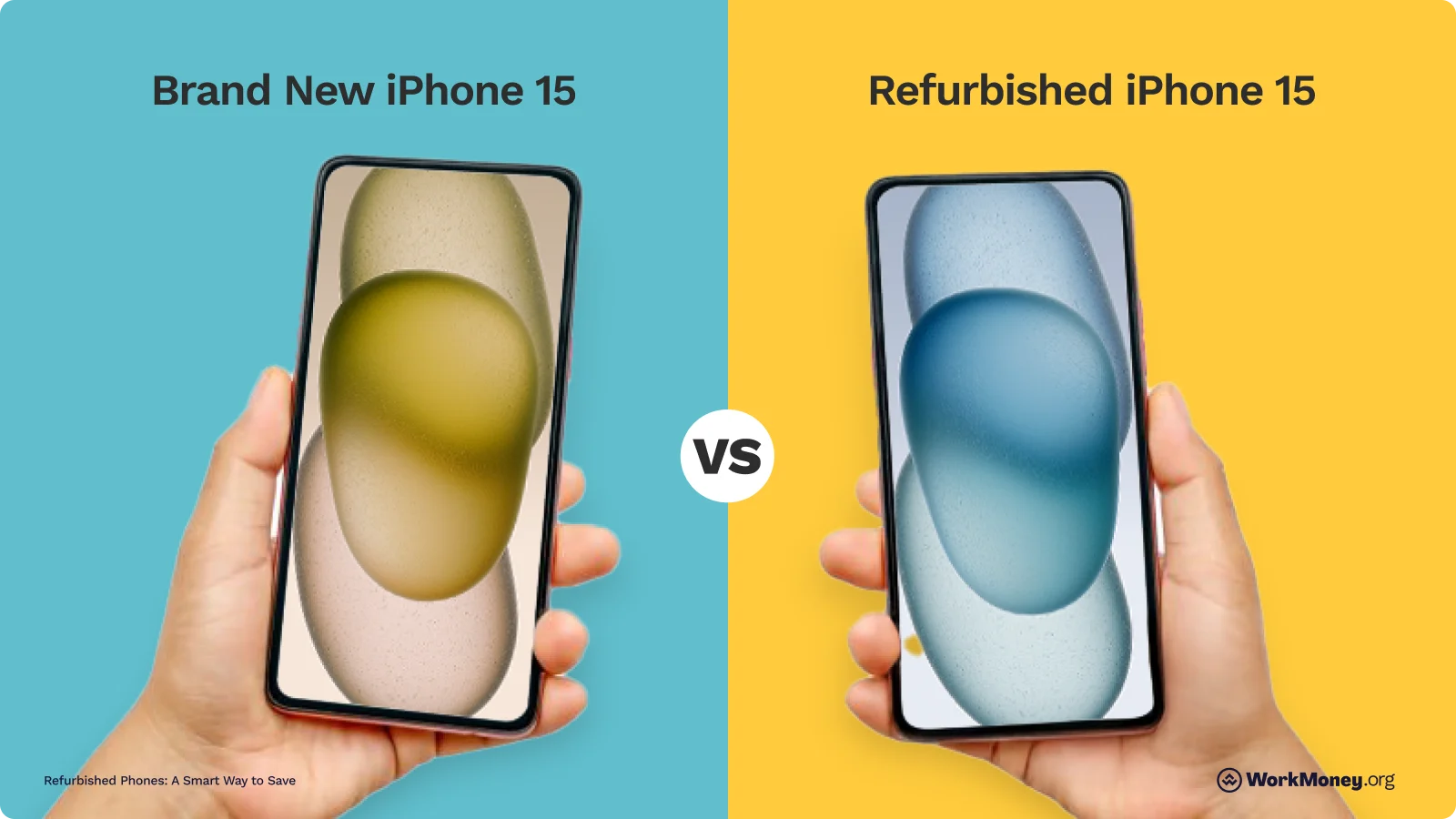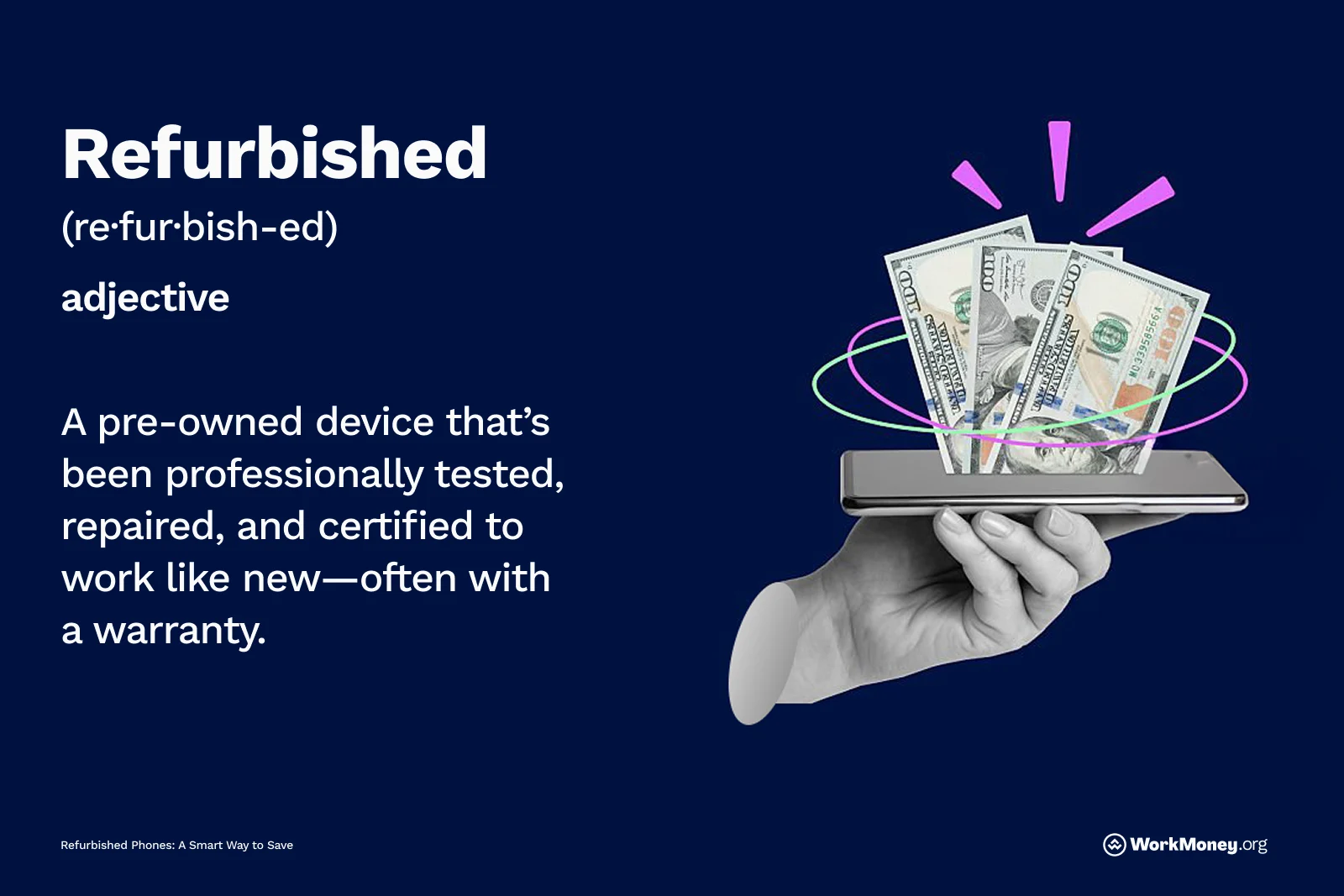Refurbished Phones: A Smart Way to Save
Get a like new phone without the brand new price. Here is what to know before you buy.

No one will argue that smartphones are expensive. A new iPhone or Android can easily cost over $1,000—and that’s before you add in a monthly plan that may run another $50 to $70. For many families, this can create real financial strain.
The good news is that there are several ways to reduce that cost and stay connected. This WorkMoney guide explains what “refurbished” really means, the pros and cons, and how to shop safely. We’ll also show you a simple two-step strategy—plus government programs that can make your monthly bill even cheaper.

Final Thoughts
Buying refurbished isn’t just about saving money on the phone itself—it’s the first step in a bigger strategy to cut your phone costs in half (or more).
By following a simple two-step plan—buying a refurbished phone and pairing it with a low-cost carrier—you can save thousands over the life of your device. Add in government programs like Lifeline, and those savings stretch even further.
The key is to shop smart by looking for warranties, sticking with trusted sellers, and always choose unlocked phones when possible. Do that, and you’ll get a phone that feels brand-new—without the brand-new price.
About the Author

DeShena Woodard
DeShena Woodard is a Financial Freedom Coach, Certified Life Coach, freelance personal finance writer, and podcast host. Her story, advice, and expertise have been featured in prominent outlets such as CNN Underscored, Business Insider, Yahoo Finance, NerdWallet, and more. Through her platform, Extravagantly Broke, she helps women take control of their finances with simple, stress-free strategies—without sacrificing the joy of everyday life. When she’s not writing or coaching, DeShena enjoys traveling, biking, and spending time with her family.
